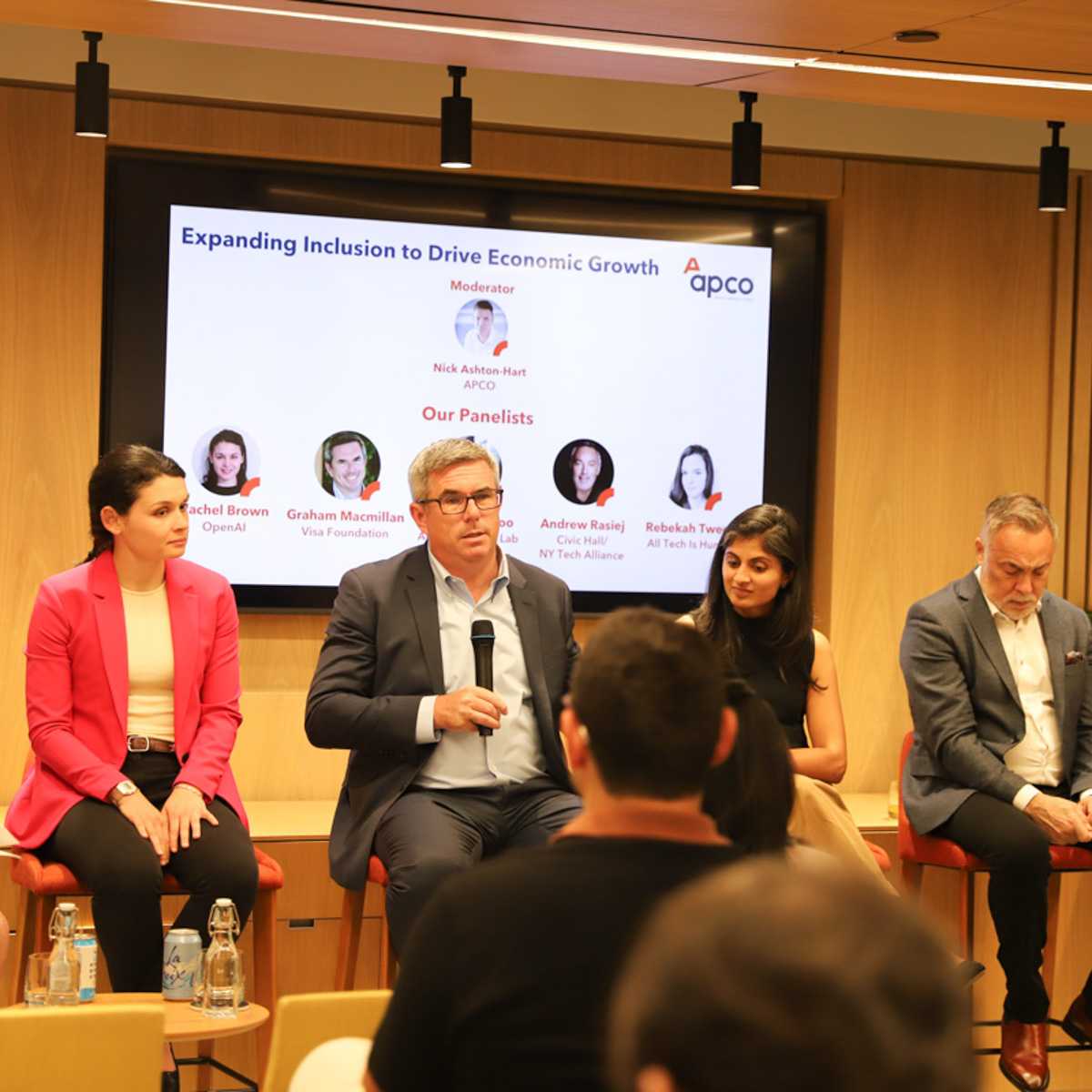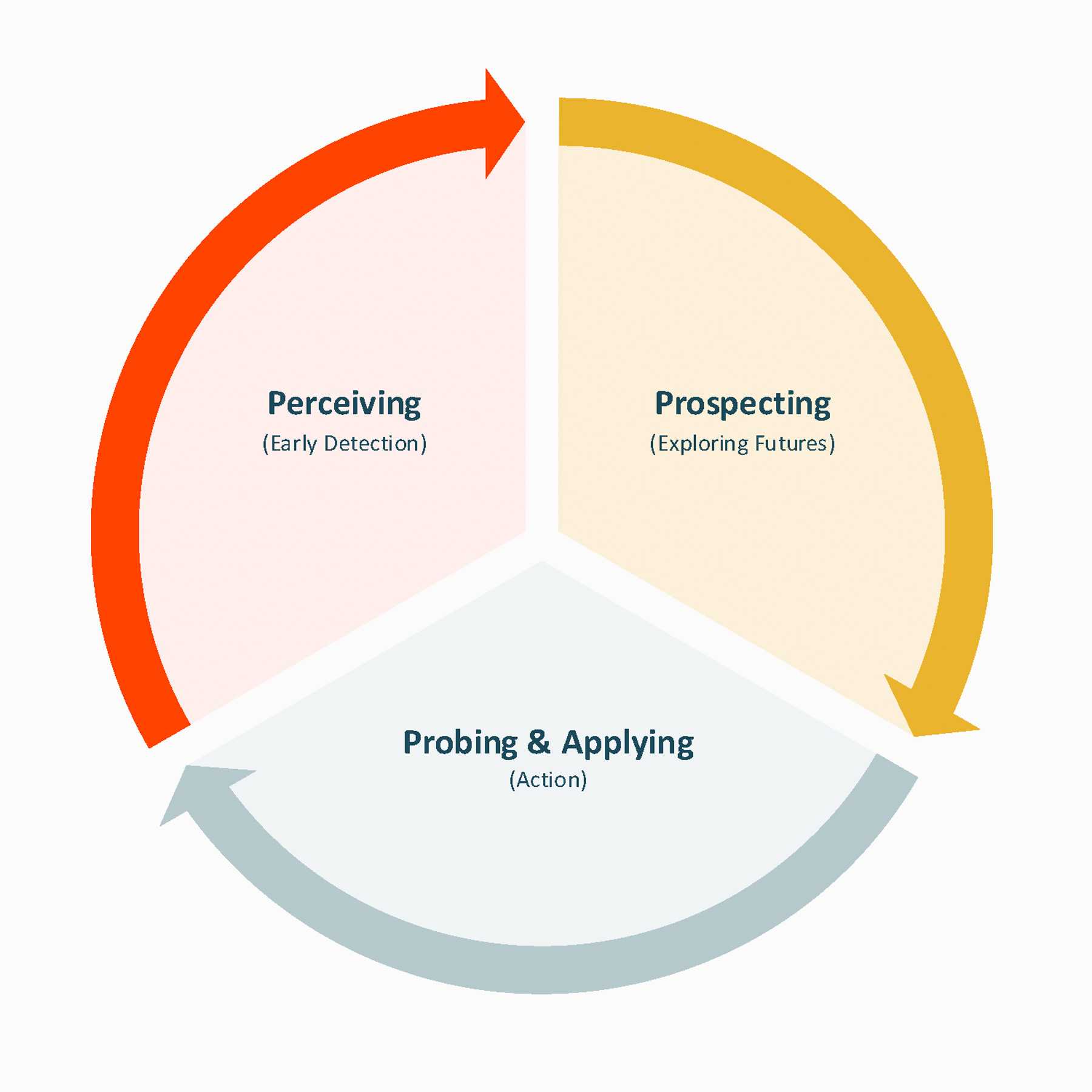

I’ve long been fascinated with behavioral nudges that reward people for making better choices about health, finances and other areas of their lives. Nudge theory is famously credited with vastly increasing employee retirement contributions. The result? Americans with 401k plans are now saving almost what they’re supposed to for retirement.
Nudges can be powerful for motivating behavior, especially when they are embedded at the point of need where they can deliver most value for the user. I’ve been thinking about the idea of embeddedness as empowerment because of a recent event at APCO’s Nomad Tower offices during New York Tech Week.
Specifically, embedding finance, education and trust into digital journeys can motivate and empower people and businesses—and they already exist in various forms. They can be brought together into more seamless embedded AI-powered experiences that both inform better decisions and provide the means to act on them with confidence.
Embedded Finance
We’re most familiar today with embedded finance through the “Buy-Now-Pay-Later” (BNPL) button in the online shopping cart, though there are many other examples across lending, insurance, or investing. The rap against BNPL is it makes it too easy for consumers to lose track of their spending and fall behind when bills come due. As a counter to that, an embedded system that holistically tracks your own spending across different platforms and nudges you before you click that buy button would be empowering. And embedded finance has many positive benefits: say a way to source competing auto loans when you’re buying a car online or embedded credit products for farmers and entrepreneurs in Africa.
Embedded Education
Many people and businesses struggle with their finances, and it’s often helpful to have digestible data, educational resources or professional advice to improve the outcome. Studies find financial literacy programs to be generally ineffective—that is, unless the information is delivered “just in time,” right at the decision point for the consumer. General artificial intelligence opens up extremely powerful opportunities to deliver education and advice as the point of need, and do it in a personalized language and communications style that will be most effective for each individual user.
The great challenge for artificial intelligence is, can you trust what it’s telling you? Trustworthy AI-enabled financial advice is the type of task-specific application that artificial intelligence can be applied to today, and it will only get better and more personalized with time.
Embedded Trust
If you are skeptical about embeddedness as empowerment, it’s for the good and simple reason that the internet is a low-trust ecosystem. The suspicion, often borne out by reality, is that technologies are doing things to us, not for us, and our data is being used against us, to manipulate us. So, for embeddedness to be empowering, we also need trust embedded as the essential element that gives the system real credibility and value.
And such forms of embedded trust do exist. Consider global monetary networks that allow people who don’t know each other and have never met to transact using a debit or credit card, knowing that goods will be received, payments will be settled, with safeguards against fraud and cyber-attacks. New forms of decentralized trust have been created by blockchain networks like bitcoin. Decentralized finance (DeFi) products using smart contracts enable peer-to-peer transactions without the need for a trusted intermediary, through instructions embedded in code and verified autonomously by the network.
Embedded nudges in our daily online journeys can be weaponized into negative behaviors—anything from racking up too much debt to buying into fake cures or acting on fake news. But instead of just thinking about what these technologies are doing to us, let’s flip the script and embed opportunities for putting people back in the driver’s seat.


